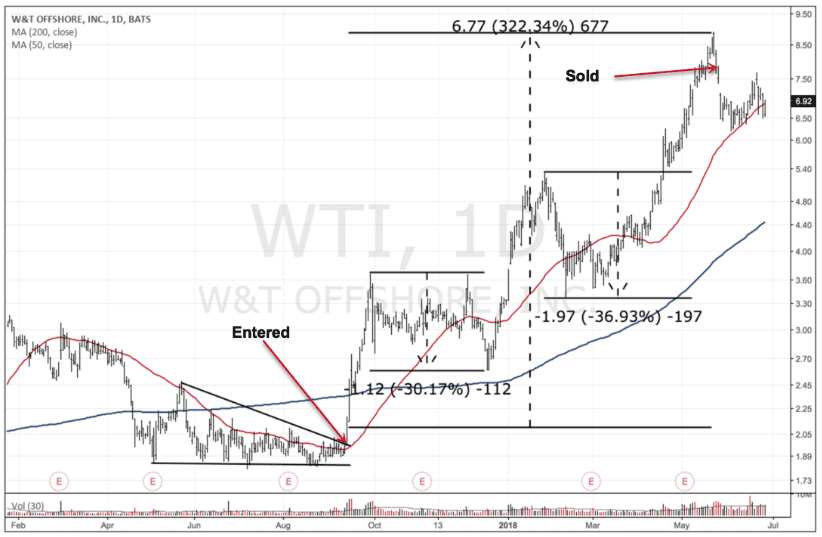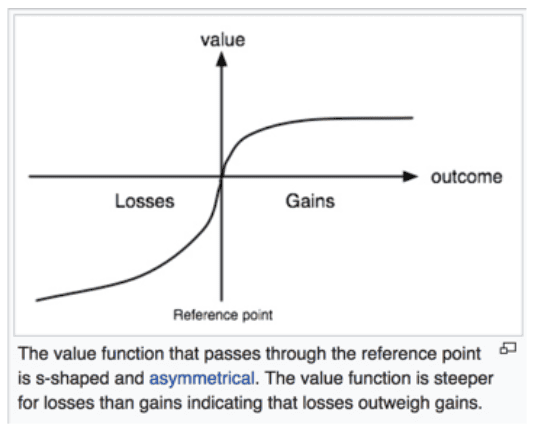Good trading is simple, just not easy.
Literally, successful trading can be boiled down to these few words from the original OG, Amos Hostetter.
Cut your losers short, and let your winners run…
This old trading axiom has been repeated throughout time by all the greats. It’s also continuously ignored by nearly everybody.
It’s not that people don’t get it or they don’t think it’s a good principle. Traders talk about how important it is all the time… yet, very few consistently apply it.
The reason why is because it’s incredibly hard to do. It goes against hundreds of thousands of years of our evolutionary neurological wiring.
Evolution wired us to be so risk averse that our instinct is to avoid losses at all costs… even small ones. It’s easier for us to renege on our risk points and let the dice roll in the hopes that price comes back our way; at least until the loss becomes painfully unbearable, our uncle point is hit, and we tap out in despair…
On the flip side, we’re wired to want to take profits quickly because we count those paper gains as already ours and the psychological pain of losing them instinctively outweighs the perceived value of sitting on the position in hopes of further gain.
This is all part of Prospect theory that was first put forth by Kahneman and Tversky. Wikipedia describes the concept as, “a behavioral economic theory that describes the way people choose between probabilistic alternatives that involve risk, where the probabilities of outcomes are known. The theory states that people make decisions based on the potential value of losses and gains rather than the final outcome, and that people evaluate these losses and gains using certain heuristics.”
We’re wired to cut winners short, and let losers run.
We evolved to be bad traders. Trading is simple, just not easy.
You may say, “well, yeah… cutting losers short and letting winners run is important but it’s hardly the whole kit and kaboodle…”
And technically you’re right. Cutting your losers short and letting your winners run isn’t everything… It’s just pretty close to being everything.
You also need to be an independent thinker; be able to develop contrarian ideas; possess mental flexibility, be able to hold multiple opinions and weight them effectively — the whole strong opinions weakly held idea.
But, really, all these mean nothing if you can’t do the basics of cutting your losers short and letting your winners run. And most can’t.
This trading maxim is so important because of the bunchy nature of market returns. Portfolio returns follow a natural power law. This power law exists in all of nature. It’s Pareto’s 80/20 rule… and in markets, it’s more like 90/10.
This means that over time, 90% of your profits will come from 10% or fewer of your trades. For example, if you’re a good trader and you place 100 trades a year, 90 them will be small losers and small winners that will effectively cancel each other out. And just 10 will account for the vast majority (90%) of your nut for the year.
This is an ironclad law. It’s true for everybody. If you study the returns of any of the greats (Buffet, Druck, Soros, Tepper, Livermore etc…) you’ll see the same 90/10 distribution of returns.
Cutting losers short, and letting winners run works because it’s in harmony with this natural power law that’s inherent to markets.
Cutting losers short cuts off the left-tail distribution of losses — yes, losers will follow the same power law if they aren’t cut short. And letting winners run let’s you fully exploit the right tail events; those 10%’ers, the fat pitches, the ungodly asymmetric trades… that only come down the pipe every so often.
But back to this not being easy to do.
It’s not only not easy because we’re psychologically wired to want to instinctively do the wrong thing. But it’s also just really hard to sit and hold through a monster trend.
Take W&T Offshore (WTI). This was a trade that we recently took full profits on. It ended up being one of our 10%’ers for the year — though far from being our biggest winner.
We first pitched our high conviction bullish oil call in August of 2017. It was clear to us that the market and popular bearish oil narrative we’re completely detached from the developing fundamentals.
We bought into WTI in August for around $2.18.
Over the following 8 months, WTI’s stock price increased over 320%, to just under $9…
We 30x’d our risk on the trade. (Our stop was at $2.00.)
This is what we consider a good trade. But sitting for the full gain was not easy. During the 8-month 320%+ rise, we had to sit through two 30%+ drawdowns and countless 5-10% drawdowns along the way.
Meanwhile, we had to endure these large pullbacks all while the majority of the market was telling us a host of very good and smart sounding reasons for why we were wrong; why the correct position was to be bearish on oil — being a contrarian is NEVER easy.
It was tough to follow the foundational trading principle of cutting your losers short, and letting your winners run… specifically, the latter.
But that’s necessary to being a good trader. You have to have the discipline to sit on your winners, ride through the inevitable pullbacks, and weather the storm as long as your reasons (for us it’s always a confluence of macro, technical, and fundamentals) for being in the trade are still valid.
This is the only way you can harness the power law of the markets and exploit it to your benefit.
Chess Grandmaster Josh Waitzkin wrote in his book The Art of Learning that:
It’s rarely a mysterious technique that drives us to the top, but rather a profound mastery of what may well be a basic skill set.
This couldn’t be any truer for trading. The best are the best because they are really good at harnessing the 90/10 power law of markets and utilizing it to their advantage. They do this by cutting their losers short, and letting their winners run.
We were fortunate enough to outperform the market during the first half of 2018. And we did so because we stuck to the basic principles of profitable trading and letting the 90/10 power law play out.
Tomorrow night, we’re throwing a live special event: How We Beat The Market In The First Half of 2018. Tyler, my partner here at Macro Ops, will be showing you guys exactly how we navigated through a tough and volatile year to produce multiples of what the S&P 500 has delivered to passive buy and holders. It’s going live at 9PM EST on June 28th.
Click here to register for this event!
On top of a full breakdown of our 2018 trading, he’ll also be updating you guys on our DOTM option strategy as well as our best practices for drawdown management. Until we hit that big trade in WTI, we had a lengthy multi-month drawdown which would’ve been impossible to endure without our drawdown management techniques.
Finally, you’ll hear how we’re positioning into year-end, and where we expect to find our next 10%’er. You don’t want to miss this!
Click here to register for the live event!











